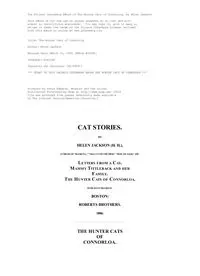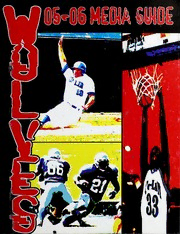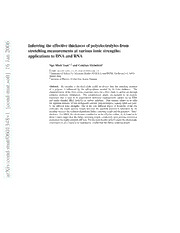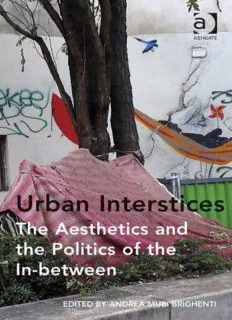
Urban Interstices: The Aesthetics and the Politics of the In-between PDF
Preview Urban Interstices: The Aesthetics and the Politics of the In-between
Urban Interstices: The Aesthetics and the Politics of the In-between Edited by ANDREA MUBI BRIGHENTI University ofTrento, Italy ASH GATE ~..v==~~~~======~--------------- © Andrea Mubi Brighenti 2013 All rights reserved. No part of this publication may be reproduced, stored in a retrieval Contents system or transmitted in any form or by any means, electronic, mechanical, photocopying, recording or otherwise without the prior permission of the publisher. Andrea M ubi Brighenti has asserted his right under the Copyright, Designs and Patents Act, 1988, to be identified as the editor of this work. List ofF igures Published by vii Notes on Contributors Ashgate Publishing Limited Ashgate Publishing Company XI Introduction Wey Court East 11 0 Cherry Street XV Andrea Mubi Brighenti Union Road Suite 3-1 Famham Burlington, VT 05401-3818 Surrey, GU9 7PT USA What Sort of a Legal Space is a City? England Nicholas Blomley www.ashgate.com 2 Trajectories of Interstitial Landscapeness: A Conceptual Framework for Territorial Imagination and Action British Library Cataloguing in Publication Data 21 Luc Levesque A catalogue record for this book is available from the British Library The Library of Congress has cataloged the printed edition as follows: 3 Tent Cities: Interstitial Spaces of Survival 65 M ubi Brighenti, Andrea. Don Mitchell Urban interstices: the aesthetics and the politics of the in-between I by Andrea Mubi Brighenti. 4 Spatial Justice in the Lawscape 87 pages cm Andreas Philippopoulos-Mihalopoulos Includes bibliographical references and index. ISBN 978-1-4 724-1001-6 (hardback}--ISBN 978-1-4 724-1002-3 ( ebook}-- 5 Coming up for Air: Comfort, Conflict and the Air of the Megacity 103 ISBN 978-1-4724-1003-0 (epub) 1. Public spaces-Case studies. 2. City planning- Case PeterAdey studies. 3. Urbanization-Case studies. 4. Sociology, Urban-Case studies. I. Title. HTI53.M82 2013 6 Automobile Interstices: Driving and the In-Between Spaces of 307.1 '216-dc23 the City 119 2013011974 lain Borden ISBN 9781472410016 (hbk) 7 Interstitial Space and the Transformation of Retail Building Types 135 ISBN 9781472410023 (ebk- PDF) Mattias Kiirrholm ISBN 9781472410030 (ebk- ePUB) 8 Interim Users in Residual Spaces: An Inquiry into the Career of a Pier on the Hudson Riverfront 153 Stephane Tonne/at 9 The Urban Fringe as a Territorial Interstice: On Alpine Suburbs 163 Andrea Mubi Brighenti MIX Paper from responsible sources Printed in the United Kingdom by Henry Ling Limited, !.~S FSG-C013985 at the Dorset Press, Dorchester, DT1 1HD v1 Urban Interstices: The Aesthetics and the Politics oft he In-between 10 Active Interstices: Urban Informality, the Tourist Gaze and Metamorphosis in South-East Asia 183 List of Figures Ross King and Kim Dovey Index 203 2.1 Images fromDer Himmel uber Berlin (also known as Wings ofD esire) directed by Wim Wenders © 1987 Reverse Angle Library GmbH and Argos Films S.A. 22 2.2 images and caption from F.M. Thrasher, The Gang. A Study of 1313 Gangs in Chicago. Chicago: The University of Chicago Press, 1936 [1927]. 27 2.3 Gilles Clc:!ment, Garden in Movement, Pare Andre-Citroen, Paris, 1992 (photo by Luc Levesque, 2001). 32 2.4 (a,b) Lucien Kroll, Perseigne Development (ZUP reorganization), Alenyon, France, 1978 (drawings by Atelier Lucien Kroll). 32-3 2.5 (a) Bemard Tschumi, Le Fresnoy National Studio for the Contemporary Arts, Tourcoing, France, 1991-1994 (drawing by Bemard Tschumi). 36 (b) Bemard Tschumi, Le Fresnoy National Studio for the Contemporary Arts, Tourcoing, France, 1991-1994 (photo by Peter Mauss/ ESTO). 36 (c) Bemard Tschumi, Le Fresnoy National Studio for the Contemporary Arts, Tourcoing, France, 1991-1994 (photo by Robert Cesar). 37 (d) Bemard Tschumi, Le Fresnoy National Studio for the Contemporary Arts, Tourcoing, France, 1991-1994 (photo by Luc Levesque). 37 2.6 (a,b) Rem Koolhaas/OMA, Ville Nouvelle Melun-Senart (masterplan), Melun, France, 1987. Plan of phase 2 and system of linear voids (drawings © OMA). 40 2.7 (a,b) Rem Koolhaas/OMA, TGB [Tres Grande Bibliotheque], Paris, 1989. Section (wallS) and axonometric (drawings© OMA). 41 2.8 (a ,b) Peter Eisenman, City of Artificial Excavation, IBA Berlin 1984, South Friedrichstadt, Berlin, 1980-1981. Site plan and conceptuals diagrams (drawings© Eisenman architects). 44 2.9 (a) Daniel Libeskind, Jewish Museum Berlin, Berlin, 1988-1999. Star Matrix (symbolic site plan) (drawing© Studio Daniel Libeskind). 46 (b) Daniel Libeskind, Jewish Museum Berlin, Berlin, 1988-1999. Aerial view (photo by Guenter Schneider). 46 (c) Daniel Libeskind, Jewish Museum Berlin, Berlin, 1988-1999. Axonometric (drawing© Studio Daniel Libeskind). 47 Vtll Urban Interstices: The Aesthetics and the Politics of the In-between List ofF igures tx (d) Daniel Libeskind, Jewish Museum Berlin, Berlin, 1988-1999. 10.6 Interstitial spirits I: An ad hoc shrine at the Khlong Toei wet market The Void (photo by Torsten Seidel). 48 to mark the murders and to intervene between poor vendors and poor (e) Daniel Libeskind, Jewish Museum Berlin, Berlin, 1988-1999 (but employed) thugs (photo by Ross King). 192 (photo by Luc Levesque). 49 10.7 Sukhumvit as interstitial space: intersecting economies, realm of 2.10 (a,b,c) SYN-, Hypotheses d'amarrages, Montreal, 2001 (photos consumption and spectacle (photo by Ross King). 194 by Guy L'Heureux). 51 10.8 Ratchaprasong in April 20 I 0: Uprising as grand theatre in the (d) SYN-, Hypotheses d'insertions Ill, Paris, 2007 (photo by SYN-). 52 interstices between revolution and Rock concert (photo from (e) SYN-, Hypotheses d'amarrages, Montreal, 2001 (photo by flickr.com). 197 Guy L'Heureux). 53 10.9 Interstitial spirits 2: The Erewan shrine at the torched Ratchaprasong (f) SYN-, Hypotheses d'amarrages, Montreal, 2001 (photo by intersection (photo by Ross King). 197 Luc Levesque/SYN-). 54 10.10 Interstitial colour: Orange-shirt motor-cycle taxi riders awaiting (g,h) SYN-, Hypotheses d'insertions I, Gatineau, 2002 (photos clients, under the sign of middle class imaginings (photo by by SYN-). 55 Kim Dovey). 198 8.1 Hudson River Park Project, 1998. 155 8.2 Political rally on Pier 84 with a State Senator and an Assembly Member: 'We are now calling the Governor and the Mayor to join us in what will be a marvelous waterfront which will stop the rotten piers, the derelict waterfront and will give us the Hudson River Park'. (Photo by Stephane Tonnelat). 157 8.3 Community rowing from Pier 84 (photo by Stephane Tonnelat). 159 9.1 Location ofthe city ofTrento in the Alps (map from openstreetmap). 168 9.2 Trento and its suburbs (map from openstreetmap). 169 9.3 The historic suburb of Cadine (photo by Andrea M ubi Brighenti). 170 9.4 The historic suburb ofOltrecastello (photo by Andrea Mubi Brighenti). 170 9.5 Popular lodgements in Roncafort (photo by Andrea Mubi Brighenti). 174 9.6 Residential expansion in Civezzano (photo by Andrea Mubi Brighenti). 174 9. 7 Two-family house in Vela (photo by Andrea M ubi Brighenti). 175 a 9.8 The old vis vis the new in Cognola (photo by Andrea Mubi Brighenti). 178 10.1 Perceptions, positions linking and de-linking the formal and informal city. 185 10.2 Inner Bangkok, indicating sites referred to in the present chapter (map by Ross King). 188 10.3 Actions and intentions, paralleling the perceptions and positions of Figure 10 .1. 189 10.4 Ban suan rim khlong (house in orchard along canal)- the guiding dream ofThai authenticity (photo by Ross King). 190 10.5 Shades of the Khlong Toei slums (photo by Ross King). 192 Notes on Contributors Peter Adey is Professor of Human Geography at Royal Holloway University of London. His work focuses upon the relationship between space, mobility and security with a particular interest in the cultures of air and the governance of emergency. Peter is the author of several books and articles, including Mobility (2009); Aerial Life: spaces, mobilities, affects (2010) and the forthcoming Air (2014). Nicholas Blomley is Professor at the Department of Geography, Simon Fraser University, Vancouver. He is the author of Law, Space and the Geographies of Power and Unsettling the City: Urban Land and the Politics ofP roperty (2004 ). lain Borden is Professor of Architecture and Urban Culture at the Bartlett School of Architecture, UCL, where he is also Vice-Dean for Communications for the Faculty of the Built Environment. His wide-ranging research includes explorations of architecture in relation to critical theory, philosophy, film, gender, boundaries, photography, bodies and spatial experiences. Authored and co-edited books include Drive: Journeys through Film, Cities and Landscapes (2012), Bartlett Designs: Speculating With Architecture (2009), Skateboarding Space and the City: Architecture and the Body (2001), The Unknown City: Contesting Architecture and Social Space (2001) and InterSections: Architectural Histories and Critical Theories (2000). Andrea Mubi Brighenti teaches Social Theory and Space & Culture at the Department of Sociology, University of Trento, Italy. He researches both empirically and theoretically into space, power and society, with specific concern for the processes of control and resistance. He is the author of Visibility in Social Theory and Social Research (2010), Territori Migranti [Migrant Territories. Space and Control of Global Mobility] (2009) editor of The Wall and the City (2009) and co-editor (with Ricardo Campos and Luciano Spinelli) of Uma Cidade de Imagens [Visual City] (2012). Besides contributions to edited volumes, he has published articles in several international peer-reviewed journals, including Urban Studies, Theory, Culture & Society, European Journal ofS ocial Theory, Space and Culture, Surveillance and Society, The Journal ofC lassical Sociology, Distinktion - Scandinavian Journal of Social Theory, The International Journal of Law in Context, Critical Sociology, Convergence- The International Journal ofR esearch into New Media Technologies, Current Sociology, Sortuz, The Canadian Journal of Law and Society/Revue Canadienne de Droit et Societe, Thesis Eleven et Law Xll Urban Interstices: The Aesthetics and the Politics oft he In-between Notes on Contributors X ill and Critique; in Italian, Tecnoscienza, Scienza & Politica, Etnografia e Ricerca Space (2003), The Lie oft he Land: Migrant Workers and the California Landscape Qualitativa, Quaderni di Sociologia, Polis, Rassegna Italiana di Sociologia et (1996) and Cultural Geography: A Critical Introduction (2000). Sociologia del diritto. He is the editor of the web journal lo Squaderno (www. losquaderno.net), Andreas Philippopoulos-Mihalopoulos is Professor of Law & Theory at the University of Westminster, London, and the Director of the Westminster Kim Dovey is Professor of Architecture and Urban Design in the Faculty of International Law & Theory Centre. His research interests include critical Architecture, Building and Planning. His research on social issues in architecture legal theory, autopoiesis, geography, human rights, psychoanalysis, art, and urban design has focused on experiences of place and practices of power. phenomenology, linguistics, and their critical instances of confluence. He has These include investigations of housing, shopping malls, corporate towers, edited three anthologies: Law and the City (2007), Law and Ecology (2007) and urban waterfronts and the politics of public space. Books include Framing Niklas Luhmann: Radical Theoretical Encounters (2013), and has published two Places: Mediating Power in Built Form (1999, 2008); Fluid City: Transforming monographs Absent Environments (2007) and Law, Justice, Society (2009). He is s Melbourne Urban Waterfront (2005), and Becoming Places (2009). Current currently completing a monograph on Spatial Justice (Routledge) and an edited research projects include those on urban place identity, creative cities, learning collection on Urban Creative Milieus (Springer). environments and the morphology of squatter settlements. He has worked with government, industry and community groups and has written and broadcast widely Stephane Tonnelat is a research faculty at the CNRS (Centre National de la in the mass media. Recherche Scientifique), based at the CRH-LAVUE research center, located at the Paris Val-de-Seine School of Architecture. His research focuses mostly on urban Mattias Kiirrholm is Professor of Architectural Theory at the Department of public spaces such as spaces of transportation (subway, ferry), parks and gardens Architecture and Built Environment, Lund University. His research interests and urban wastelands. He is currently leading a research project on the public include territoriality, actor-network theory, retail architecture, public space, urban spaces along the 7 train in New York. This elevated line serves as the backbone of form and sustainable urban development. He is the author of the book Arkitekturens numerous ethnic immigrant communities. The project aims at exploring the effect Territorialitet (The Territoriality of Architecture) and has published articles in of this diversity on the subway and conversely how the experience of the subway international peer-reviewed journals such as Urban Studies, Nordic Journal of affects interpersonal relations based on ethnicity, gender, age and so on. More Architectural Research, Social & Cultural Geography and Space & Culture. generally, Stephane's interests include urban planning and design, theory of public space, parks and gardens, pluralism and multiculturalism. He is a member of the Ross King is a Professorial Fellow in the Faculty of Architecture Building and editorial committee of the journals Chimeres and Metropolitiques.eu. Planning at the University of Melbourne, Australia. In recent times his research has focused on the urban conditions and society of East and South-East Asian cities. His most recent book has been Reading Bangkok (2011). Present projects relate to Seoul in South Korea and again to Bangkok and Thailand. Luc Levesque is an architect and artist, Professor in History and Theory of Architectural and Design Practices at Universite Lava! (Quebec City); his recent body of research traces the potentialities of an interstitial approach to urban landscape and urbanism. In 2000, he eo-founded the collective SYN-, with whom he has produced different works of urban exploration and micro-interventions. As a member of the editorial committee of Inter, art actuel (www.inter-lelieu.org), he has edited many issues dealing with architecture, landscape and urban practices. In architecture, he has collaborated with various firms in North America and Europe. Don Mitchell is an academic geographer at the Maxwell School of Syracuse University. He is a graduate of the San Diego State University (1987), Pennsylvania State University (1989) and received his PhD from Rutgers University in 1992. He is the authors of The Right to the City: Social Justice and the Fight for Public Introduction Andrea Mubi Brighenti This book collects ten contributions from urban scholars pivoted around the notion of 'interstice', or - as we might tentatively call it - in-between space. To our mind, the current interest in this notion is grounded in some general considerations emerging in the field of urban studies at the beginning of an announced urban century. For some time now, social scientists, including geographers, economists, sociologists and anthropologists, have been questioning classical models of urban growth, such as for instance the centre/periphery model. It has been argued that both phenomena of urban expansion - such as urban sprawl and the formation of polycentric urban regions - and phenomena related to new forms of land use - including processes as diverse as enclavism, gated communities, new media urbanism, 'splintering' urbanism, capsularized dwelling, slumification, panic-city, squatter evictions and the militarization of urban space - challenge most classic models employed to understand the city. In particular, a cleavage becomes increasingly evident: it is the current cleavage between two processes that could be termed, respectively, the urbanization of territory and the territorialization oft he city. While urbanized territory corresponds to a territory that is infrastructurally as well as structurally equipped with a wide array of urban devices for communication and control - ranging from street signs to information technologies and the infusion of software into urban spaces and objects -the territorial city seems to evoke a wider, and arguably more complex, aspiration towards a new urbanity or a new civility. On the one hand, the process of urbanization of territory has been first identified by Michel Foucault (2004/1978) in his studies on the emergence of a modern government of the population - in particular where he examined the 'sciences of police' that appeared in sixteenth- and seventeenth-century Europe, later to be developed into more specialized 'apparatuses of security' and control. On the other hand, the notion of urbanity as tied to a specifically urban culture has been described in classic works by Jane Jacobs, Erving Goffman and Richard Sennett as a capacity to positively interact with strangers in public. Following the appreciation of 'distance' as a key feature of democratic public space expressed by Hannah Arendt, Sennett (1977: 264) characterized urban civility as an ability that consists of 'treating others as though they were strangers and forging a social bond upon that social distance'. Compared to that classic form of civility - and in measure proportional to the reach of urbanized territoriality -today's new urbanity faces a number of major challenges: the increasing dispersal of xvi Urban Interstices: The Aesthetics and the Politics of the In-between Introduction XVll public space (see e.g. Amin 2008), and what Sloterdijk (2005: 543) has called the passage from Deleuze and Guattari that we can locate the essential coordinates of 'asynodic constitution' of contemporary society. At present, the contours of such such a puzzle: new urbanity are far from clarified or settled; what is certain is that classic urbanity has been fundamentally reshaped by the spatial, technical and social process of the In contrast to the sea, the city is the striated space par excellence; the sea is extensive territorialization of the city. a smooth space fundamentally open to striation, and the city is the force of striation that reimparts [redonnerait; literally 'would give back'] smooth space, puts it back into operation everywhere, on earth and in the other elements, Into the interstice outside but also inside itself. The smooth spaces arising from the city are not only those of worldwide organization, but also of a counterattack combining the In this context, we believe the notion of urban interstice might prove useful. smooth and the holey and turning back against the town: sprawling, temporary, To begin with, to speak of an in-between or interstitial space clearly means to shifting shantytowns of nomads and cave dwellers, scrap metal and fabric, go beyond the centre/periphery dichotomy, the core/margin dichotomy or even patchwork, to which the striations of money, work, or housing are no longer the city/suburb pseudo-dichotomy. As King and Dovey (this volume, Chapter even relevant. An explosive misery secreted by the city, and corresponding to 10 ) argue, 'the metropolis [itself] is always interstitial between the global Thorn's mathematical formula: 'retroactive smoothing.' Condensed force, the and the indigenous'. Interstices exist - and come to exist - everywhere in the potential for counterattack? (Deleuze and Guattari 1987[1980]: 481) city and its territory. If so, how do we recognize them? The fact that a certain space is indicated or enacted as a space 'in-between' others presupposes that Thus formulated, the issue is clearly a political one: city government represents it is regarded as somehow minoritarian vis a vis other spaces that surround or a force of striation which is resisted and opposed by two fundamentally different encircle it. The interstice is a 'small space': far from being a merely extensive forces of smoothness: capitalist large (planetary) organizations, on the one hand, notion, such smallness inherently signifies a power issue. In other words, 'in and minority populations (the 'explosive misery') living in urban interstices, on between-ness' refers to the fact of being surrounded by other spaces that are the other. Yet, simultaneously, the issue also looms larger than the-albeit certainly either more institutionalized, and therefore economically and legally powerful, real and dramatic- opposition between social actors with their respective 'material or endowed with a stronger identity, and therefore more recognizable or typical. and ideal interests', to use a Weberian category. Rather, what Deleuze and Guattari Traditionally, interstices have been associated with wastelands and leftover also illustrate is the functioning and the dynamic production of material spatial spaces, generated as by-products of urban planning, i.e. as unplanned margins that logics. The city is a force of striation-i.e. of planning, quadrillage, urbanization result a fortiori, after a planned action has unfolded on an urban territory (Edensor of territory - that by its very functioning constantly reintroduces smoothness in 2005). Interstices are thus imagined essentially as vacant lots, terrains vagues the space thus created: indeterminacy, ambiguity of location, a number folds and or decaying ruins. While this is certainly the case, we also suggest that such an underground paths in the urban territory. image does not exhaust the whole extent of the notion of interstitiality. Indeed, an While the city colonizes territory through acts of spatial repartition, it also additional complication is due to the fact that in the contemporary city it becomes creates within itself a space of distributions and trajectories. Such a process is increasingly difficult to establish a clear and univocal Gestalt: what is to count as anything but arcane. In fact, it can be easily observed today. Indeed, the trend the foreground shape of the city, and what else as its shapeless-hence, interstitial towards larger-scale urban planning - for instance through iconic territorial - background? The complexities generated by the extensive urbanization of and architectural intervention -inherently produces larger interstices. From an territory and the proliferation of criss-crossing plans on the territory carried on old modernist unsophisticated functionalist viewpoint, interstitiality equates to by different agencies and actors make it difficult to neatly separate foreground emptiness. However, emptiness also means possibility - at the very least, some and background phenomena: our very observational point of view is called into fresh air to breathe that flows through the otherwise asphyxiating landscape of question. An enriched observation of the processes of territorial production, the corporate city. Thus, the interstice could also be observed as an involuntary stabilization and transformation is required - a veritable territorio1ogy (Brighenti side-effect of the spatial production of atmospheres (Sloterdijk 2005): whenever 2010a). As reminded by both Levesque (this volume, Chapter 2) and King and a plurality of pressurized, air-conditioned and immunized bubbles are added side Dovey (this volume, Chapter 10), rather than a mere gap in the urban fabric, by side, a foam is created. The eo-isolation and eo-fragility which characterize the the interstice is in fact an active component. From this perspective, interstitial structure of the foam essentially amounts to the emergence- albeit unwilling- of territorialities can only be appreciated by taking into account the dynamics of an under-determination: an urban interstice. power and resistance, of fluidity and boundedness, ofmobilities and moorings, of smoothness and striatedness that occur in the contemporary city. It is in a classic XV Ill Urban Interstices: The Aesthetics and the Politics oft he In-between Introduction XIX The interstice as urban morphology and urban event in his case study on pier 84 in Manhattan, Tonnelat (this volume, Chapter 8) distinguishes the 'institutional career' of a place from its 'experiential career'; Yet, in our view, the notion of interstice cannot be thoroughly reduced to its and it is from this perspective that I (this volume, Chapter 9) have carried out an morphological characters only. IdentifYing two general points of view on interstices extensive empirical investigation of an Alpine suburb as a peculiar contact zone might help clarifYing what is at stake. The first point of view is an essentially in the urban fringe. structuralist one: it regards the interstice as a leftover space, what remains after a The in-between-ness of minoritarian spaces refers, as we have remarked single, central planning process, or between two heterogeneous and discontinuous above, to the fact that they are surrounded by other more institutionalized plans. The second point of view is, by contrast, event-oriented or evental: from this spaces. Most importantly, however, the way in which such 'being surrounded' second perspective, the interstice is to be regarded as the outcome of a composition takes place in practice makes interstices more or less liveable, more enclave-like of interactions and affections among a multiplicity of actors that coexist within a or more threshold-like (on these two notions, see respectively Caldeira (2001) given spatial situation. The second perspective adds, to a realistic-and therefore and Stavrides (2011)). As remarked by Levesque (this volume, Chapter 2) the necessary - consideration of power relations, a genealogical point of view that attempt to make sense of in-between-ness generates 'a polysemous discursive attends all the minute accidents that eventually constitute the specific atmosphere field oscillating between connection and disjunction': the interstice is sometimes - understood as both ambience and pressure-of a given place. a rapture and sometimes an opening up. At first, interstices are places for minority Adding movement to our understanding of the interstice is what shifts us from populations ranging from Roma people to hip hop crews, for urban losers and the first to the second perspective. The type of urban exploration carried out by all those who are for many reasons forced to struggle for their right to the city Waiter Benjamin in the 1930s (Benjamin 1999), as well as the one practised by (Mitchell 2003; Marcuse 2009). In this sense, just as it hosts interstitial spaces, the Situationists in the 1950s (Situationist International 1958), enacted a type the city also hosts interstitial subjects: it is the case of evicted squatters in North of movement capable of plumbing the uncertain, ill-defined, crepuscular and American downtowns (Blomley 2004; this volume, Chapter 1) and the inhabitants metamorphic states of urban territories. Fldnerie and derive are simultaneously of tent cities (Mitchell, this volume, Chapter 3). Here interstitiality corresponds aesthetic, cultural and political practices. The spirit of such observers on the move to a form of inhabiting that resists 'sanitization', expulsion and deportation. has been inherited by a number of contemporary interstitial explorers, such as for Mitchell cautions us against any easy-going romantic understanding of interstices, instance Stalker/osservatorio nomade and their urban trekkings across the city of showing that, in fact, they can be places of domination as well. It is thus important Rome (Careri 2002). When compared to the seemingly stable territories of the to stress that the interstice is a descriptive notion rather than one necessarily urban built environment,fldnerie and derive imply a degree of deterritorialization laden with positive overtones. Tent cities as interstitial spaces of survival are and the initiation to a more fluid spatiality created by encounters in loose space functional to a neoliberal management of public visibilities and invisibilities: and their ensuing events. they represent a space where the social outcomes of a disastrous economic model Overall, our argument is that it is only by taking the evental point of view can be conveniently hidden. In a different context, the new retail spaces studies seriously that we can begin to recognize the simple fact that interstices cannot be by Karrholrn (2012) illustrate how interstices are appropriated and exploited by known in advance: the interstice is not simply a physical place, but very much a marketing and advertisement strategies. phenomenon 'on the ground', a 'happening', a 'combination' or an 'encounter'. The richness of interstitial encounters is not limited either to the brutal clench This is the reason why studying interstices as mere leftover urban spaces is not of power on specific places and subjects, or to the capitalist logic that tends to enough: interstices result from the actualization of a series of environmental exploit all visual ecological niches, though. Issues of visibility and invisibility affordances (an expressive potential, a reservoir that is inherent in certain zones) are always ambiguously played out in between the denial of recognition and the in the context of a phenomenologically relevant encounter (an interactional possibility of resistance. So, Kim Dovey (20 10 ) has spoken of the invisibility of framework) that unfolds in a given meaningful spatial materiality (a specific informal settlements in South-East Asian cities, which can be marginalizing but work on the materials that make the city). Following Mattias Karrholm (this also protective (see also King and Dovey, this volume, Chapter 10), while lain volume, Chapter 7), interstices 'can be found or produced at any place' and time. Borden (2001) has analysed urban skaters' performative critique of architecture They can be usefully conceptualized as a form of 'spatial production through as a fleeting and nightly activity. In-between spaces are invested with desires and territorial transformation'. Consequently, the task of observing and interpreting imagined (not imaginary) needs, as a conceptualization of urban mobilities that in-between spaces requires both historical and territorial reconstruction of such is attentive to affects (Adey 2009) reveals. Driving in the city provides one such spaces, and an in situ exploration through which the researcher can make sense affective, as well as imaginative, experience (Borden, this volume, Chapter 6). of the events and the encounters (certainly, not always 'good' encounters) that Interstitiality as porosity-literally, 'possibility of ways' - may therefore suggest contribute to the creation of an interstice. It is from a similar perspective that an approach to the city that stresses the many spatial modes in which a plurality
Description:The list of books you might like

A Thousand Boy Kisses

The Subtle Art of Not Giving a F*ck

The 48 Laws of Power

Shatter Me Complete Collection (Shatter Me; Destroy Me; Unravel Me; Fracture Me; Ignite Me)
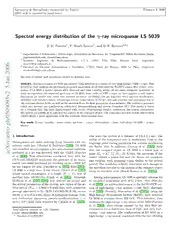
Spectral energy distribution of the gamma-ray microquasar LS 5039

Zahnradgetriebe: Grundlagen, Konstruktionen, Anwendungen in Fahrzeugen
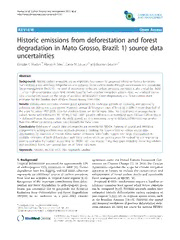
NASA Technical Reports Server (NTRS) 20110015537: Historic Emissions from Deforestation and Forest Degradation in Mato Grosso, Brazil: 1. Source Data Uncertainties
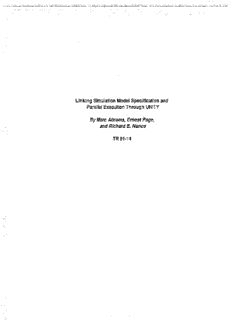
By Marc Abrams, Ema-st Page

Boletín Oficial de la República Argentina. 2007 2da sección
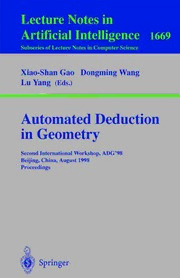
Automated deduction in geometry : Second International Workshop, ADG '98, Beijing, China, August 1998 : proceedings
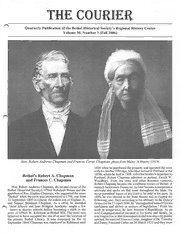
The Courier, Vol. 30, No. 3
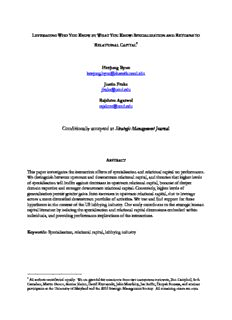
Byun Frake Agarwal 2017

CAUT Bulletin April 2012 (Volume 59, Number 4)
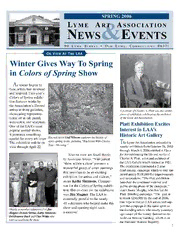
SPRING 2006 LYME ART ASSOCIATION NEWS & EVENTS

Attitudes Towards the Use of Violence and Partner Directed Aggression

Le moment créatif, un outil pour mieux apprendre
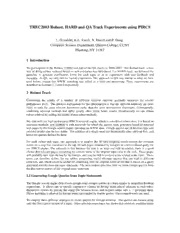
DTIC ADA456258: TREC2003 Robust, Hard and QA Track Experiments Using PIRCS

+CA EKİ, SIFATIN ANLAMINI GÜÇLENDİRİR Mİ?

Government and political life in England and France, c.1300-c.1500
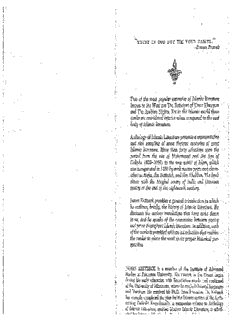
Anthology of Islamic Literature : From The Rise of Islam to Modern Times
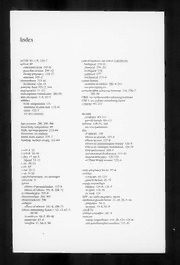
Oxford Reviews of Reproductive Biology 1993: Vol 15 Index
